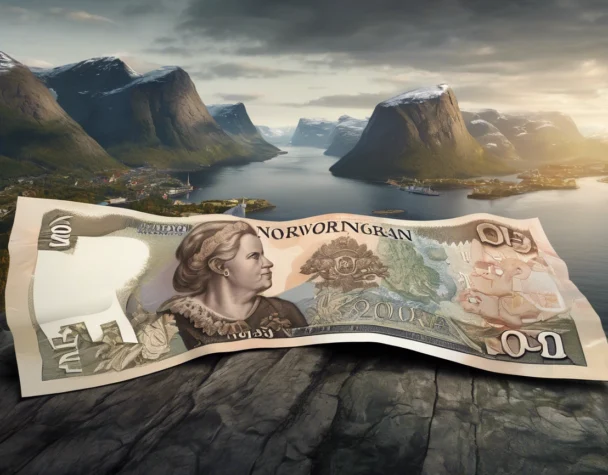
Norwegian Krone vs. USD: Forecasting Future Trends
Thu, March 06, 2025As global markets continue to navigate through unpredictable economic climates, the Norwegian Krone (NOK) against the U.S. Dollar (USD) exchange rate remains a focal point for traders and economists alike. This comparison not only sheds light on Norway’s economic health but also provides insights into broader market trends. This article delves into the future trends of the NOK versus the USD, presenting an analysis based on current economic indicators, geopolitical influences, and expert predictions.
Navigating the NOK vs. USD: What Lies Ahead
The Norwegian economy, heavily reliant on oil and gas exports, sees its currency, the Krone, often sway with fluctuations in oil prices. As global demand for energy evolves and environmental policies tighten, the future price of oil—and consequently, the value of the NOK—can be challenging to predict. However, recent trends towards renewable energy and technological advancements in energy efficiency suggest a potential decrease in oil dependency, which could weaken the Krone against the Dollar. Furthermore, the U.S. Federal Reserve’s monetary policies play a crucial role. With the possibility of continued interest rate hikes to combat domestic inflation, the USD might strengthen, applying additional pressure on the NOK/USD exchange rate.
Economic recovery patterns post-pandemic also significantly impact the NOK vs. USD outlook. Norway’s handling of the COVID-19 crisis and its swift economic recovery have been commendable, supporting the Krone’s strength. However, as the world economy stabilizes, the U.S.’s larger and more diverse economic structure may attract more investors, bolstering the USD. Additionally, political stability in the U.S. following the turbulent recent years could restore investor confidence in the dollar, potentially leading to a modest uptrend against the Krone.
Lastly, the role of Norway’s Central Bank in managing the krone’s value cannot be understated. Interventions and monetary policy adjustments aimed at stabilizing the currency may counterbalance some of the downward pressures. With inflation also a concern in Norway, the central bank’s response in terms of interest rate adjustments will be pivotal in determining the NOK’s position against the USD in the coming years.
Analyzing Trends: Predictions for the Krone
Financial analysts often use historical data, current trade balances, and geopolitical contexts to forecast currency movements. For the NOK, its correlation with crude oil prices continues to be a dominant factor. If predictions about decreasing global oil dependency hold true, the Krone might face downward pressure. Conversely, unexpected geopolitical tensions in oil-rich regions could temporarily boost oil prices and the NOK. Additionally, Norway’s trade surplus, fostered by its exports exceeding imports, traditionally supports the Krone’s value. However, shifting global trade dynamics and protectionist policies could challenge this advantage.
Furthermore, technological advancements and green energy initiatives within Norway might provide the Krone a new lease on life. As Norway invests in sustainable practices and innovations, particularly in offshore wind and hydroelectric power, these sectors could potentially become as influential as oil and gas. Such developments would not only diversify Norway’s economy but also possibly strengthen the Krone against the USD, especially as global investment trends lean towards sustainability.
Lastly, considering the broader financial landscape, the U.S. dollar’s status as the world’s primary reserve currency provides it with inherent stability and appeal, particularly in times of global uncertainty. This factor alone may sustain USD strength against the NOK. However, if the U.S. faces political instability or economic downturns, the scenario could favour the Krone. Therefore, investors and observers should watch for signs of such shifts which may significantly impact NOK vs. USD movements.
As we look towards the future, the interplay between the Norwegian Krone and the U.S. Dollar remains complex and multifaceted, influenced by a myriad of economic, political, and environmental factors. While the prediction of currency trends involves inherent uncertainties, understanding these influences helps in making informed assessments. For traders, investors, and economists, keeping a close eye on these dynamics will be crucial in navigating the ever-evolving landscape of the NOK vs. USD.

